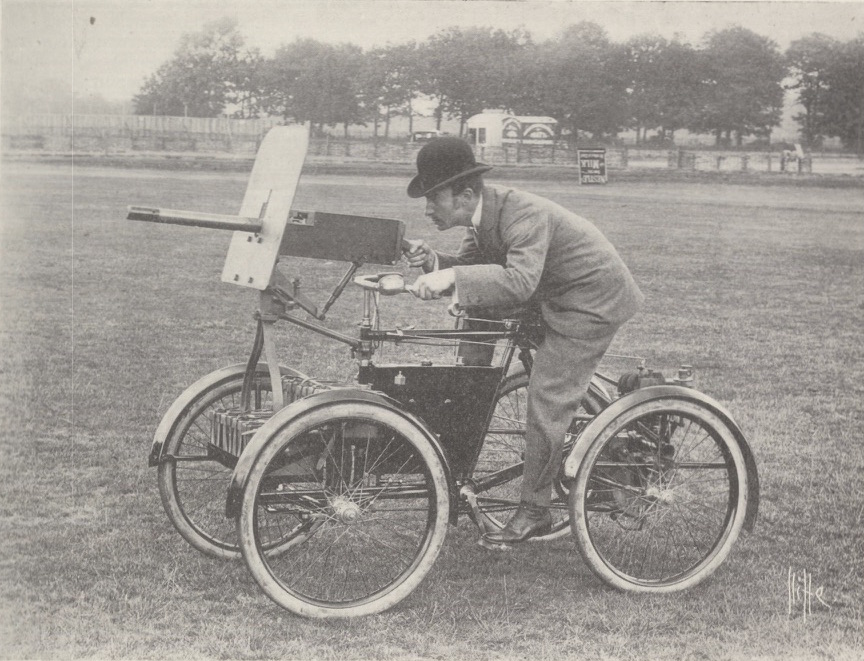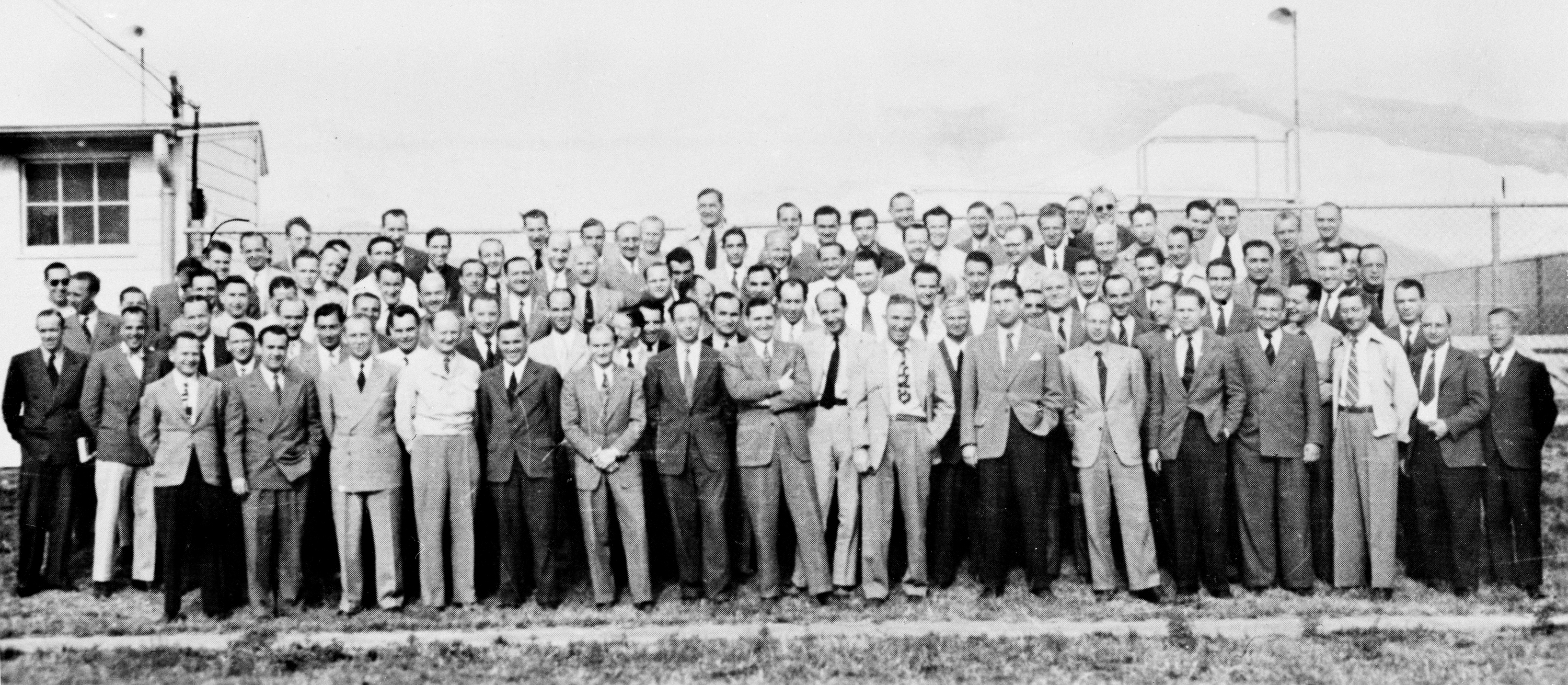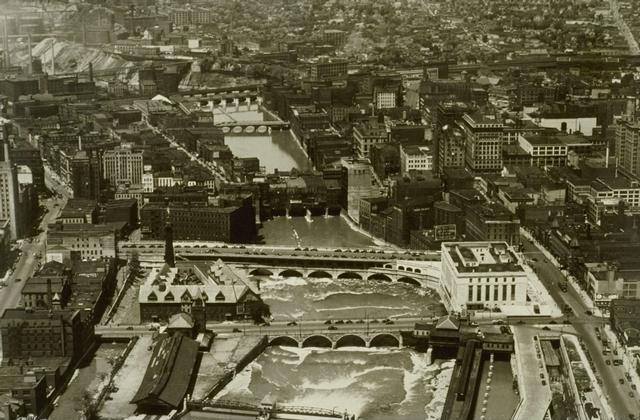|
M1 Armored Car
The M1 armored car was a four-wheel drive American armored car tested by the United States Army Ordnance Department in 1931 and briefly in 1932. It was built by James Cunningham, Son and Company of Rochester, New York, and during testing demarcated as the Model T4. History Two T4s were built to Ordnance Department specifications by Cunningham Motors, Rochester, New York. Subsequent ones were built by Rock Island Arsenal Two T4 test vehicles were built in 1931 and tested until 1934, when they were standardized as the M1. Some sources indicate an additional ten T4s may have been built before standardization- Army records list only 12 M1 cars being accepted, though it is unclear if these are all new built vehicles or if the number includes the ones originally built as T4s. If the records refer to two different orders, the maximum number built for each type is still only twelve T4 and twelve M1. All vehicles of both designations are believed to have been issued to the First Caval ... [...More Info...] [...Related Items...] OR: [Wikipedia] [Google] [Baidu] |
Armored Car (military)
A military armored (Commonwealth English, also spelled armoured) car is a wheeled armoured fighting vehicle, historically employed for reconnaissance, internal security, armed escort, and other subordinate battlefield tasks. With the gradual decline of mounted cavalry, armored cars were developed for carrying out duties formerly assigned to light cavalry. Following the invention of the tank, the armoured car remained popular due to its faster speed, comparatively simple maintenance and low production cost. It also found favor with several Colonial troops, colonial armies as a cheaper weapon for use in underdeveloped regions. During World War II, most armoured cars were engineered for reconnaissance and passive observation, while others were devoted to communications tasks. Some equipped with heavier armament could even substitute for tracked combat vehicles in favorable conditions—such as pursuit or flanking maneuvers during the North African campaign. Since World War II t ... [...More Info...] [...Related Items...] OR: [Wikipedia] [Google] [Baidu] |
M2 Machine Gun
The M2 machine gun or Browning .50-caliber machine gun (informally, "Ma Deuce") is a heavy machine gun that was designed near the end of World War I by John Browning. While similar to Browning's M1919 Browning machine gun, which was chambered for the .30-06 cartridge, the M2 uses Browning's larger and more powerful .50 BMG (12.7 mm) cartridge. The design has had many designations; the official U.S. military designation for the infantry type is Browning Machine Gun, Cal. .50, M2, HB, Flexible. It has been used against infantry, light armored vehicles, watercraft, light fortifications, and low-flying aircraft. The gun has been used extensively as a vehicle weapon and for aircraft armament by the United States since the 1930s. It was heavily used during World War II, the Korean War, the Vietnam War, the Falklands War, the Soviet–Afghan War, the Gulf War, the Iraq War, and the War in Afghanistan. It is the primary heavy machine gun of NATO countries and has been used by many o ... [...More Info...] [...Related Items...] OR: [Wikipedia] [Google] [Baidu] |
United States Army Ordnance Corps
The United States Army Ordnance Corps, formerly the United States Army Ordnance Department, is a Combat service support (United States), sustainment branch of the United States Army, headquartered at Fort Gregg-Adams, Fort Gregg-Adams, Virginia. The broad mission of the Ordnance Corps is to supply Army combat units with weapons and ammunition, including at times, their procurements and maintenance. Along with the Quartermaster Corps (United States Army), Quartermaster Corps and Transportation Corps, it forms a critical component of the U.S. Army logistics system. The U.S. Army Ordnance Corps mission is to support the development, production, acquisition, and sustainment of weapon systems, ammunition, missiles, electronics, and ground mobility materiel during peace and war to provide combat power to the U.S. Army. The officer in charge of the branch for doctrine, training, and professional development purposes is the Chief of Ordnance of the United States Army, Chief of Ordnance ... [...More Info...] [...Related Items...] OR: [Wikipedia] [Google] [Baidu] |
James Cunningham, Son And Company
James Cunningham, Son and Company was an American business based in Rochester, New York, initially manufacturing horse-drawn coaches, that from 1908 onward developed and produced automobiles. The Cunningham company was a pioneer in automobile production, credited with being one of the world's first developers and manufacturers of automobiles and, in 1916, one of the first carmakers to produce an American V8 engine automobile. Its Cunningham automobile was a pioneering American production automobile. History The firm dates to 1838, when James Cunningham joined the carriage firm Kerr, Cunningham, and Company. Incorporated in 1882, and taken over after James' death in 1886 by his son Joseph, the company made fine carriages and sleighs, and became a leading manufacturer of these vehicles before the turn of the century. Cunningham went on to manufacture automobiles, car bodies (mainly hearses), chassis frames for other marques, and aircraft. Today, it is mainly remembered for high-qua ... [...More Info...] [...Related Items...] OR: [Wikipedia] [Google] [Baidu] |
Rochester, New York
Rochester is a city in and the county seat, seat of government of Monroe County, New York, United States. It is the List of municipalities in New York, fourth-most populous city and 10th most-populated municipality in New York, with a population of 211,328 at the 2020 United States census, 2020 census. The city forms the core of the larger Rochester metropolitan area, New York, Rochester metropolitan area in Western New York, with a population of just over 1 million residents. Throughout its history, Rochester has acquired several nicknames based on local industries; it has been known as "History of Rochester, New York#Rochesterville and The Flour City, the Flour City" and "History of Rochester, New York#The Flower City, the Flower City" for its dual role in flour production and floriculture, and as the "World's Image Center" for its association with film, optics, and photography. The city was one of the United States' first boomtowns, initially due to the fertile Genesee River ... [...More Info...] [...Related Items...] OR: [Wikipedia] [Google] [Baidu] |
Rock Island Arsenal
The Rock Island Arsenal comprises 946 acres (383 ha) and is located on Arsenal Island, originally known as Rock Island, on the Mississippi River between the cities of Davenport, Iowa, and Rock Island, Illinois. It is home to the United States Army First United States Army, First Army Headquarters, and the United States Army Center of Excellence for Additive Manufacturing. Historically the indigenous Sauk people used Rock Island as their summer camp site. Encroaching European Americans coming into the area disputed the claim of tribal ownership, and competition between the peoples led to the Black Hawk War of 1832. It was named for Black Hawk (Sauk leader), Black Hawk, the primary leader of the Sauk people, Sauk. In 1816 the federal government authorized the army to build Fort Armstrong, Illinois, Fort Armstrong here, to protect shipping on the river in the aftermath of the War of 1812 with Great Britain. Decades after the Civil War, in the 1880s the army established a found ... [...More Info...] [...Related Items...] OR: [Wikipedia] [Google] [Baidu] |
1st Cavalry Regiment (United States)
The 1st Cavalry Regiment is a United States Army regiment that has its antecedents in the early 19th century in the formation of the United States Regiment of Dragoons. To this day, the unit's special designation is "First Regiment of Dragoons". While they were the First Regiment of Dragoons, another unit designated the 1st Cavalry Regiment was formed in 1855 and in 1861 was re-designated the 4th Cavalry Regiment (units were renumbered based on seniority, and it was the fourth oldest mounted regiment in active service). The First Dragoons became the 1st Cavalry Regiment, since they were the oldest mounted regiment. Background During the American Revolutionary War (1775–1783), Continental forces patterned cavalry units after those of the opposing British forces, especially the well-supplied mounted dragoons of the British Army. The first cavalry unit formed by the Congress of the United States of America was a squadron of four troops (the Squadron of Light Dragoons) command ... [...More Info...] [...Related Items...] OR: [Wikipedia] [Google] [Baidu] |
M2 Browning Machine Gun
The M2 machine gun or Browning .50-caliber machine gun (informally, "Ma Deuce") is a heavy machine gun that was designed near the end of World War I by John Browning. While similar to Browning's M1919 Browning machine gun, which was chambered for the .30-06 cartridge, the M2 uses Browning's larger and more powerful .50 BMG (12.7 mm) cartridge. The design has had many designations; the official U.S. military designation for the infantry type is Browning Machine Gun, Cal. .50, M2, HB, Flexible. It has been used against infantry, light armored vehicles, watercraft, light fortifications, and low-flying aircraft. The gun has been used extensively as a vehicle weapon and for aircraft armament by the United States since the 1930s. It was heavily used during World War II, the Korean War, the Vietnam War, the Falklands War, the Soviet–Afghan War, the Gulf War, the Iraq War, and the War in Afghanistan. It is the primary heavy machine gun of NATO countries and has been used by man ... [...More Info...] [...Related Items...] OR: [Wikipedia] [Google] [Baidu] |
T17E1 Staghound
The T17E1 armored car was an American Armored car (military), armored car manufactured during the Second World War. It saw service with United Kingdom, British and other Commonwealth of Nations, Commonwealth forces during the war under the name Staghound, but was never used on the front line by US forces. A number of other countries used the Staghound after the war; some vehicles continued to serve until the 1980s. History In July 1941, the United States Army Ordnance Corps, U.S. Army Ordnance issued specifications for a medium armored car alongside a specification for heavy armored car (which resulted in the T18 Boarhound). Ford Motor Company built a Six-wheel drive, six wheels, all driven (6 x 6) prototype which was designated T17 Deerhound, T17 and Chevrolet a Four-wheel drive, four wheels, all driven (4 x 4) model designated T17E1. At the same time, the British Purchasing Commission was also looking for medium and heavy armored cars for use in North Africa Campaign, the war ... [...More Info...] [...Related Items...] OR: [Wikipedia] [Google] [Baidu] |
M8 Greyhound
The M8 light armored car is a 6×6 armored car produced by the Ford Motor Company during World War II. It was used from 1943 by United States and British forces in Europe and the Pacific until the end of the war. The vehicle was widely exported and still remained in service with some countries. In British service, the M8 was known as the "Greyhound", a service name seldom, if ever, used by the US. The British Army found it too lightly armored, particularly the hull floor, which anti-tank mines could easily penetrate (the crews' solution was lining the floor of the crew compartment with sandbags). Nevertheless, it was produced in large numbers. The M8 Greyhound's excellent road mobility made it a great supportive element in the advancing American and British armored columns. It was marginal cross country, especially in mud. Development and production history In July 1941, the U.S. Army Ordnance Department initiated the development of a new fast tank destroyer to replace the M6 ... [...More Info...] [...Related Items...] OR: [Wikipedia] [Google] [Baidu] |
List Of U
A list is a set of discrete items of information collected and set forth in some format for utility, entertainment, or other purposes. A list may be memorialized in any number of ways, including existing only in the mind of the list-maker, but lists are frequently written down on paper, or maintained electronically. Lists are "most frequently a tool", and "one does not ''read'' but only ''uses'' a list: one looks up the relevant information in it, but usually does not need to deal with it as a whole". Lucie Doležalová,The Potential and Limitations of Studying Lists, in Lucie Doležalová, ed., ''The Charm of a List: From the Sumerians to Computerised Data Processing'' (2009). Purpose It has been observed that, with a few exceptions, "the scholarship on lists remains fragmented". David Wallechinsky, a co-author of '' The Book of Lists'', described the attraction of lists as being "because we live in an era of overstimulation, especially in terms of information, and lists help ... [...More Info...] [...Related Items...] OR: [Wikipedia] [Google] [Baidu] |
Armored Cars Of The United States
Armour (Commonwealth English) or armor (American English; see spelling differences) is a covering used to protect an object, individual, or vehicle from physical injury or damage, especially direct contact weapons or projectiles during combat, or from a potentially dangerous environment or activity (e.g. cycling, construction sites, etc.). Personal armour is used to protect soldiers and war animals. Vehicle armour is used on warships, armoured fighting vehicles, and some combat aircraft, mostly ground attack aircraft. A second use of the term ''armour'' describes armoured forces, armoured weapons, and their role in combat. After the development of armoured warfare, tanks and mechanised infantry and their combat formations came to be referred to collectively as "armour". Etymology The word "armour" began to appear in the Middle Ages as a derivative of Old French. It is dated from 1297 as a "mail, defensive covering worn in combat". The word originates from the Old French ... [...More Info...] [...Related Items...] OR: [Wikipedia] [Google] [Baidu] |







